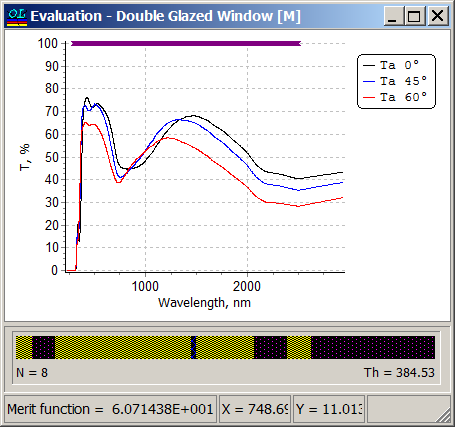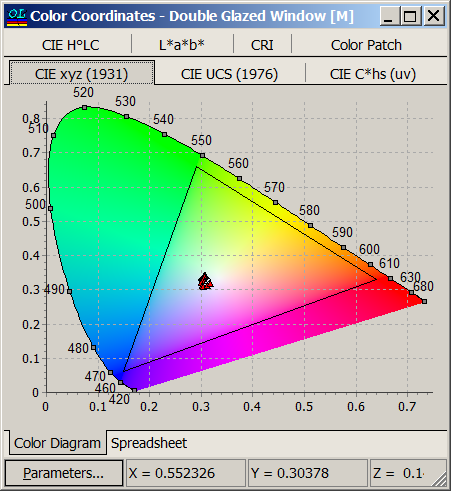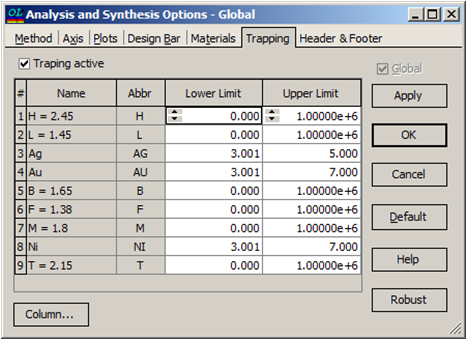| OptiLayer allows designing of all types of optical coatings with specified color properties.
OptiLayer supports color targets in all existing color coordinates systems:
|
Example: Coating changing color of the reflected light from Violet (at normal incidence) to Yellow (at AOI=50o)
|
| Example: Coating changing color of the reflected light from Red (at normal incidence) to Violet (at AOI=50o)
|
Color Patch represents color variations in another way:
|
Metal-dielectric Color Coatings
| OptiLayer allows designing all types of metal-dielectric coatings. Even design with metal-island films is possible.
Example: One of the building blocks in such coatings is a metal island film (for example, Ag, Au) embedded into SiOe environment. Metal-dielectric composite Ag-SiO2 (Au-SiO2) can be represented as s thin layer with effective thickness \(\delta\). Refractive index \(n(\lambda)\) and extinction coefficient \(k(\lambda)\) can be found from thin film characterization based on ellipsometric/photometric experimental data related to test samples (sandwiches of SiO2-Ag-SiO2 or SiO2-Au-SiO2). For this purpose, an unique non-parametric characterization approach of OptiLayer can be applied. |
Schematic representation of a metal-dielectric sandwich.
|
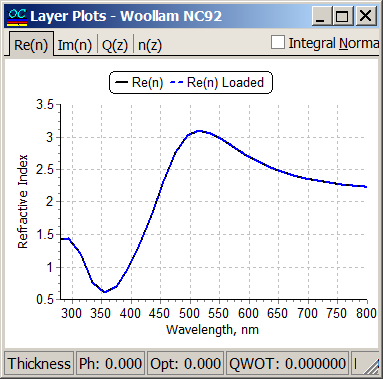
|
Challenges:
Design Example: Coatings reflected light of different colors from their front and back sides. Transmittance of the sample should be more than 50%. Many combinations of colors of the reflected light from front and back sides can be considered, for example:
|
| Such coatings can be easily designed with the help of OptiLayer. Color coordinates of such coatings are shown on the chromaticity diagram on the right pane.
Number of layers is from 7 to 12 With effective thickness of Ag-SiO2 layer of 12 nm, averaged transmittance in the visible spectral range is about 60-65%. Similar samples can be produced:
Learn more in our publications:
|
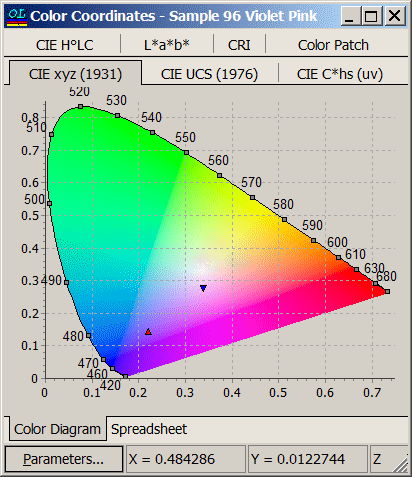 |
Coatings for Architectural Glass
| Modern buildings and houses are often clad in double panes (double glazing) or triple panes (triple glazing) to enhance views and daylight. The optical qualities of the glass and its multilayer coatings are important from both practical and aesthetic pints of views.
Panes are manufactured with glass in range of thickness from 3 mm to 10 mm. Laminated or tempered glass may also be used as part of the construction. OptiLayer allows designing all types of panes-coatings combinations and achieving any specified target specifications with the help of the powerful stack tool. Simplified example: two glass panes with antireflection coatings on both of them. Target specifications:
|
OptiLayer allows simultaneous specifications of targets of different types: conventional, color, integral and electrical-field. In this particular design problem three types of targets are involved:
Spectral luminous efficiency \(V(\lambda)\) and spectral distribution of solar radiation \(S(\lambda)\), which are necessary for calculations, are built in OptiLayer (F1, F2). Of course, you can define and use your own spectral distributions (F3, F4, etc). |
| Possible thin film materials: TiO2, SiO2, Silver.
Result: a double glazing with 8-layer metal-dielectric coatings on the internal surfaces. OptiLayer allows evaluating integral values of spectral and color characteristics:
|
|
| One of the results:
Transmittance of the double glazing in the spectral range from 300 nm to 2500 nm for different angles of incidence.
OptiLayer allows specifying targets weights. It means that depending on your preferences you will achieve a required balance between target specifications of different types. |
Color coordinates for different incidence angles are plotted on the chromaticity diagram:
Color Rendering Index is 90-95% in the whole angular range! |
Angle-Independent Color Mirror (Contest Problem)
| In conjunction with the 2013 Optical Interference Coatings (OIC) topical meeting of the Optical Society of America (Tucson, Arizona), an angle-independent color mirror was a subject of a design contest held. Michael Trubetskov (developer of OptiLayer Software) and Weidong Shen (user of the OptiLayer Software) won this contest by submitting color mirror designs with a zero color difference between normal incidence and all other incidence angles up to 60° as well as the thinnest design. Many designers used OptiLayer Software in order to solve design contest problems. Learn more about the contest… | |
|
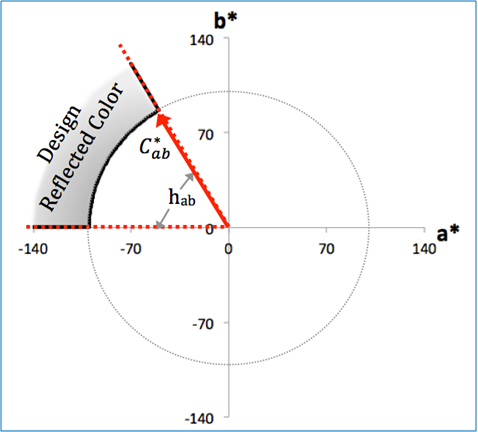 |
| All-Dielectric Solution:
nsub = 1.52, ninc = 1.0 Layer Materials: F = 1.38 L = 1.45 B = 1.65 M = 1.8 T = 2.15 H = 2.45 |
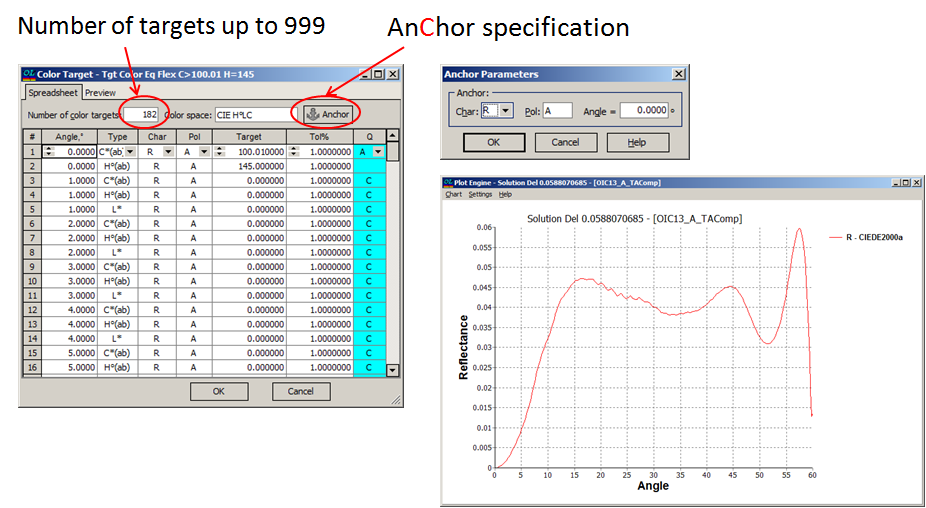 |
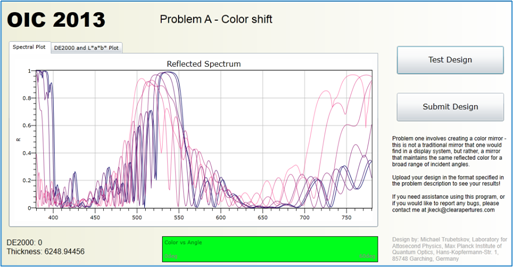 |
Design tricks and approaches:
|
Metal-Dielectric Solutions:
|
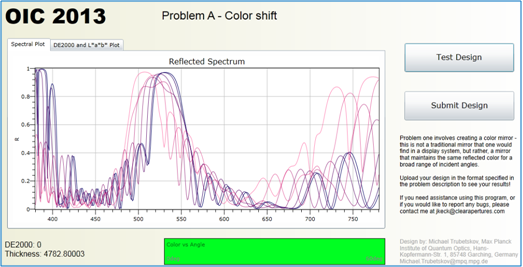
A winning result: Design has 121 layers, total physical thickness of 4782.80003 nm, DE2000 = 0; 13 thin Ag layers.
Learn more: https://www.osapublishing.org/ao/abstract.cfm?uri=ao-53-4-A360&origin=search |

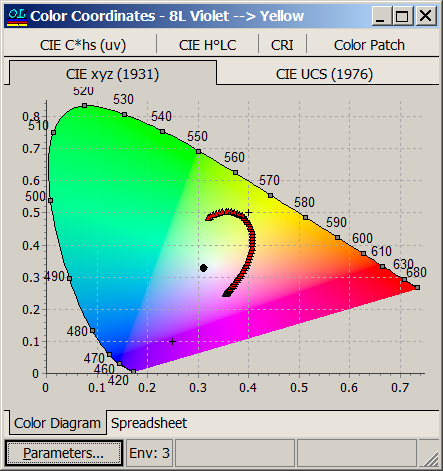
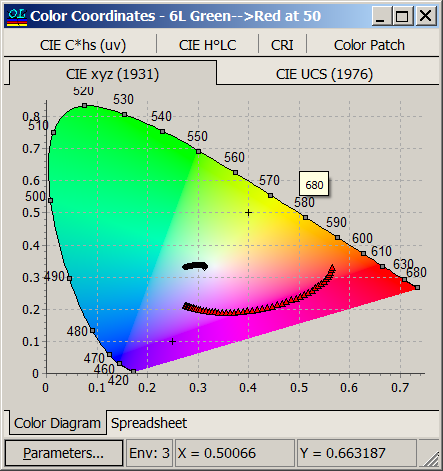
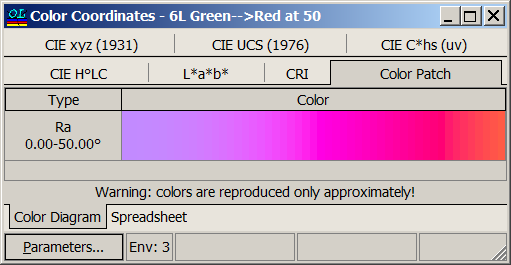
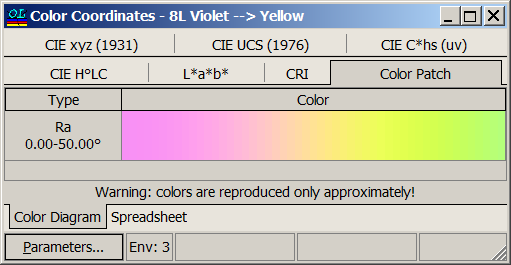
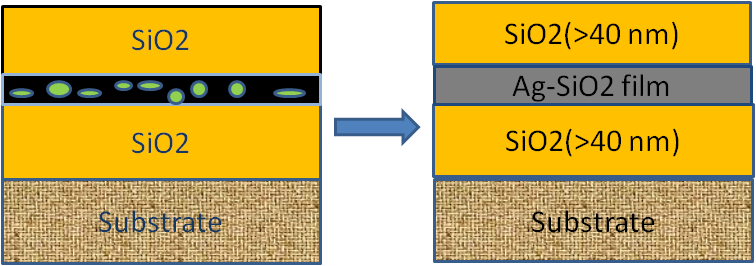

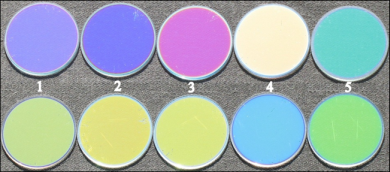
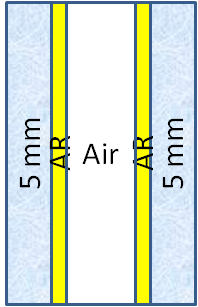
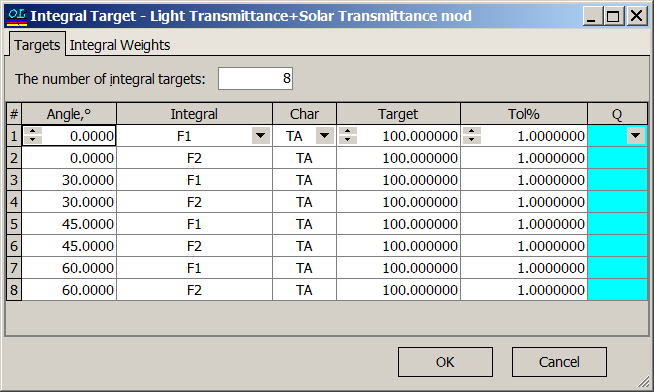
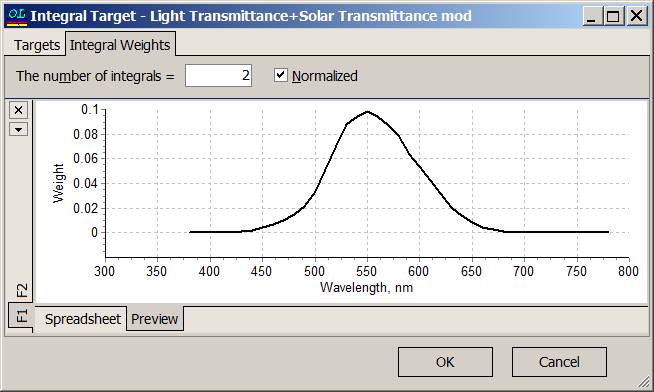
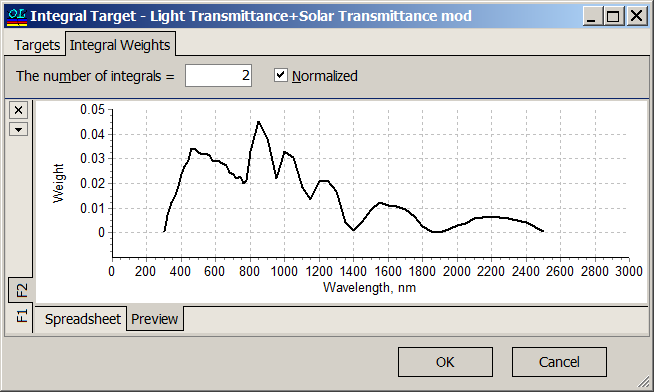
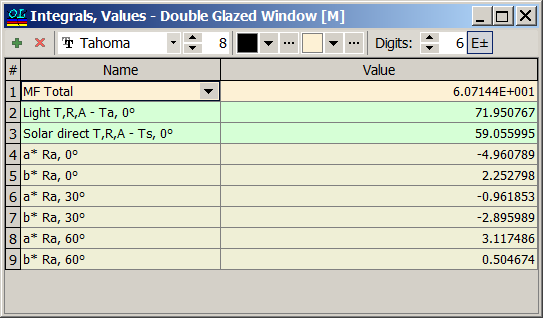
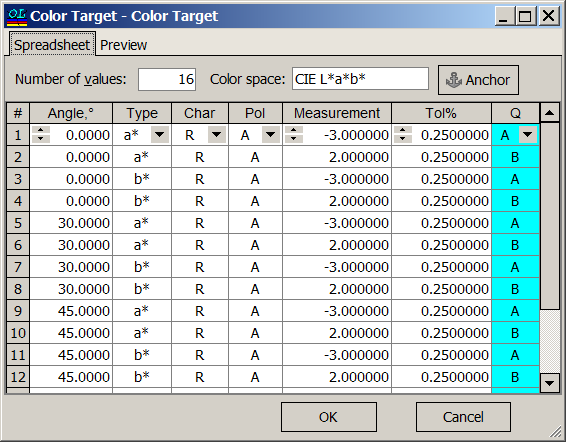 OptiLayer allows specifying color targets in all existing color coordinates systems.
OptiLayer allows specifying color targets in all existing color coordinates systems.